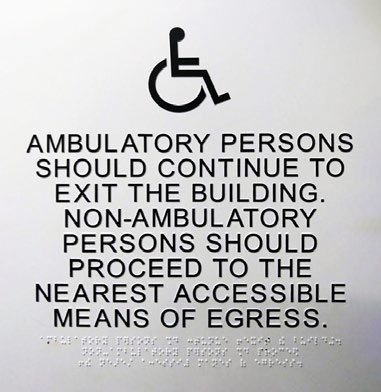Language usage
Language often presents the first hurdle to accessibility. Complex language heightens cognitive load. To ensure clarity and avoid needless jargon and complexity, use plain and clear language, particularly for complex subjects.

Writing for accessibility
Make it scannable
In order for text content to be scannable, it needs to be written with an understandable and predictable structure and hierarchy. Implement a clear linear progression of ideas, and avoid needlessly complex sentence and paragraph structures. Break up long passages of text into smaller sections with meaningful subheadings. Provide plain language summaries of complex content.
Short is sweet
Choose shorter words over longer ones if the content’s meaning remains clear. Eliminate any unnecessary words that don’t add to the meaning. This improves clarity and reduces your reader’s cognitive effort.
Literally be literal
Avoid using idioms. Write everything as if it will be processed by a Google Translate afterwards, and you need it to maintain its meaning after any machine translation. Not only is this a practical consideration since online translation services are used by people around the world, this self-imposed limitation can train you to write with greater clarity, precision, and ultimately, accessibility.
Insider knowledge

Avoid needlessly relying on words or phrases that could be considered insider knowledge. This includes, but is not limited to abbreviations, acronyms, jargon, and scientific terms. If you need the economy or precision that these terms can provide, define or explain them upon their first instance of usage in a body of text.
Don’t deceive their ears
There are words that sound nearly identical, but have different meanings, such as “all” and “awl,” “bare” and “bear,” or “to,” “too,” “two,” and “tutu.” For readers who rely on text to speech technology, these homonyms can sometimes cause confusion. In order to avoid this problem, consider the following.
- Ensure that the context or usage of the homonym makes the intended meaning unambiguous.
- Avoid using homonyms if they are not necessary.
- If the homonym is both necessary and cannot be clarified by context, provide a mechanism that will draw attention to the homonym and spell it out for the reader.
Don’t deceive their eyes
There are different words that are spelled identically, but their meaning is clarified in speech by differentiated pronunciation. For instance, in the statement “he put a sticker of a bass on the body of the bass,” how do we know if the sticker depicted a fish or a musical instrument? And what exactly did he put the sticker on? Exercise care when using heteronyms.
- Ensure that the context or usage of the heteronyms makes the intended meaning unambiguous.
- Avoid using heteronyms if they are not necessary.
- If the heteronym is both necessary and cannot be clarified by context, provide a mechanism that will draw attention to the heteronym and annotate the pronunciation for the reader.
One language at a time
Avoid incorporating foreign words into your language usage, unless there really is no equivalent word or expression. Native English speakers often needlessly incorporate foreign words or phrases, and this can be very confusing for non-native English readers and anyone using a text to speech mechanism.
Check Your references
Pop culture references can be fun and illustrative for those in the know, but for others they can be alienating and confusing. They may also age poorly, decreasing their communicative value and accessibility over time. Never use a cultural reference that your audience might not understand, unless its meaning can be gleaned from context, or it is otherwise explicitly explained.
Explain the unexpected
If a word or phrase is being used that may be unknown to your reader, provide a mechanism to integrate definitions for these terms. Conversely, if you are using a well-known word or phrase with an unusual, limited, or particularly specific definition, you need to clearly define that term’s usage for your reader as well.
Keep it on the level
In some cases, despite our best efforts, a text may still require a reading ability more advanced than a lower secondary school education level. In these cases, provide either a plain language summary of the complex content, or an alternate version that does not require such a high reading level.
“Make everything as simple as possible, but not simpler.”
— Albert Einstein
Assistive technology
Understanding assistive technologies like screen readers and Braille displays is crucial for accessible digital design. Learn how these tools impact user experience and the importance of keyboard compatibility for diverse input devices.
